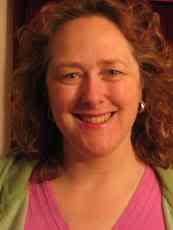Using Technology Appropriately
Thanks to mass production and constant innovation, average personal computers are cheaper and easier for schools to afford. The question of technology access, therefore, has shifted from a question commonly referred to as the “digital divide” to a question of what knowledge should be made available to students. In considering this question, schools or school districts have had to put policies and procedures into place. In addition, many schools—as have many public libraries which offer Web-browsing service to the public—have opted to purchase expensive, and oftentimes wrongfully restrictive, software filters. Technology access now primarily examines the who, what, when, where, and how of culling material from the Internet.
“Technology is interpreted as process, not merely in terms of hardware (such as computers or television or projectors), but in terms of learners and their relationship to the people, events, places, and things through which they learn.” (Peck, 1989) This appears to be the crux of this article. Although schools establish policies, which set the basic parameters of how appropriate conduct is defined, and procedures, which deal with the application of the policies on a more detailed level, these can be as limiting and self-defeating as the filtering softwares used.
Prince William County, for example, has blocking software which bans searches of such innocuous terms as “relationship” or “fidelity.” Friel writes in her article, “Using Technology Appropriately: Policy, Leadership, and Ethics,” that “(B)ecause censorship is subjective, however, perhaps the best way to approach Internet use is to stress guidance rather than censorship” (LeBaron, 2001). And perhaps it is this vision, of technology as process—and not as a mechanism which must be impeded—which would allow it to be simultaneously productive and liberating.
Many schools, as part of their Code of Behavior, have put into place policies and procedures regarding computer usage. By outlining what is considered inappropriate use of computers, and setting up procedures for discovering and dealing with offenses, school administrators can be smug in the knowledge that their work is done. For instance, in Prince William County, students may not use the e-mail or instant messaging features which have become an integral part of computers' societal and social functions. Unfortunately, many worthwhile projects cannot be undertaken because of this restriction.
Language Arts teachers carry the bulk of the burden of implementing the Virginia Computer/Technology Standards of Learning. In Prince William County this load is primarily shouldered by 8th and 11th grade-level English teachers who guide students in writing research papers. Part of the mandate is to educate students on the issue of plagiarism, explicitly defined in the County’s Code of Behavior as cheating. The policy reads: “(C)heating includes the giving or receiving of a computer file, programs, part of a program, or other computer-based information without specific teacher direction or approval” (Code of Behavior, 2006). To ensure that cheating is not occurring, students are asked to read information found on the Internet and write about it in their own words on three by five notecards, citing the source on the card with its specific location. It is reported that this exercise only moderately stems the “cutting and pasting” behavior so prevalent among students.
Perhaps our task as educators should be to arm students with a vision, to lift students beyond the immediacy of the search or task-at-hand. Students know they are only offered part of the power of computers. Perhaps this leads many to feelings of disenfranchisement. Perhaps this explains why policies and procedures are constantly being challenged in an attempt to play with or uncover computers' untapped potential. Naturally students must be alerted to the potential danger zones. However, educators should be like beacons, guiding students, keeping them safe, alerting them to storms on the horizon, and helping them find their place in the greater scheme of things.
Sources:
Code of Behavior. (2006). Prince William County Public Schools.
LeBaron, J. (Ed.). (2001). Technology in its place: Sucessful technology infusion in schools. San Francisco, CA: Jossey-Bass.
Peck, Kyle (1989). National Forum on Information Literacy. Retrieved September 27, 2006, from Association for Educational Communication and Technology Web site: http://www.infolit.org/members/aect.htm


2 Comments:
Hi Brigitte! I love your idea of teachers as beacons or guiding lights!
It is a shame that you are unable to use email with your students. I know that there are many opportunities for foreign language teachers to use email in the classroom.
I am glad (and saddened at the same time) to know that my students are not the only ones who seem to be unable to summarize facts in their own words. I am not sure if it is because they are lazy, they don't understand, they just want to get work done quickly or they simply don't care. I like your idea of arming them with a vision.
The filters definitely have their advantages and disadvantages. I am glad we have them but, I think that as a teacher, I should have the ability to turn them off.
great post!
There is a tricky balance when it comes to filtering software. Is the purpose of schools to educate students how to sift through information, evaluate information, and analyze information. If this is true, should it apply to all information or information determined appropriate. Oh, a question for the ages. We could go further with our questions – who should determine what is appropriate and what is not appropriate? This is a tough one. I would say that each of us would initially believe that their opinion is the correct opinion. But, is it really? Another question for the ages.
I must agree with Lynne, I was happy that you arm your students with a vision. From that vision they determine what is important and necessary. Tremendous.
Post a Comment
<< Home